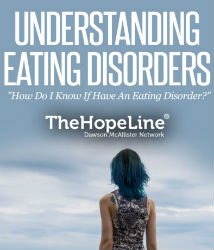Statistics on Eating Disorders
Anorexia
Average age of onset
17 years. The age of people with anorexia nervosa appears to be getting younger with cases being diagnosed in girls as young as 11 years of age
Prevalence
In developed societies, anorexia nervosa is the third most common chronic illness for young females. (obesity & asthma are 1 & 2) It is ten times more common than insulin dependent diabetes.
15 – 19 year old females 0.5%
20 – 24 year old females 0.25%
After Obesity & Asthma, Anorexia is is the most common disease in this population group.
Anorexia’s 0.5% prevalence in one age group should be compared with the lifetime risk of 1% of schizophrenia.
Mortality Rate
20% after 20 years. (eg. before 40 years of age as most onset is early teens) 5 times greater than that of the same aged population in general, with deaths from natural causes being 4 times greater (eg. cardiac arrhythmia, infection) and deaths from unnatural causes 11 greater than expected. Risk of successful suicide is 32 times that expected for same aged population.
To compare with major depression: Overall mortality rate is 1.4 times that expected, unnatural deaths 7 times and suicide 20 times greater than expected.
Average Duration of Disorder
5 years
At risk groups
First degree relative (ie sister or daughter or mother) are 10 times more likely to develop anorexia than other relatve
Long term effects
- Brain atrophy
- Effect on congition
- Cardiac arrhythmias
- Growth retardation
- Infertility
- Osteopaenia leading to osteoposoris
- Renal and hepatic function impaired
- Neurogenic bowel with subsequent rectal prolapse
Prevalence of Anorexia and Bulimia Nervosa
- Between 0.5 – 3.7% of adolescent and young adult women meet the criteria for Anorexia Nervosa
- Between 1.1 – 4.2% meet the criteria for bulimia nervosa.
- Male: female ratio ranges between 1:6 to 1:10
- Sub-clinical eating disorders even more pervasive
- 45% of Americans consider themselves overweight and 58% are trying to lose weight.
- 64% of normal weight women and 23% of normal weight men with no history of weight problems are dieting.
In New Zealand
- Dieting is very common
- Perhaps as many as 10% of adolescent girls go through a mild phase of almost anorexia.
- It is a biopsychosocial illness
- It does seem to be increasing and presumably this is due to social factors.
Anorexia Nervosa: Epidemiology
- 0.5% women between 15-45
- 3-5% sub-clinical form
- 7 new cases per 100,000 per annum
- 250 cases a year, 1300 cases at any one time.
- Mortality 10-20 % after 20 years
Bulimia Nervosa
- 2% women between 15 and 40
- Incidence 15 new cases per 100,000 pa.
General
- 1 in 4 teenage girls may suffer from the symptoms of an eating disorder
- Canada: 1739 girls aged between 12 & 18 were interviewed. · 27% had significant symptoms of eating disorders
- 23% currently dieting
- 15% reported binge eating associated with loss of control
- 8.2% reported self induced vomiting
- 2.4% using diet pills
- 52% of adolescents begin dieting before age 14
- In a study of children aged 8 – 10, 50% of the girls and 33% of boys were unhappy with their size
- In the USA, Canada, and Australia 1 in every 100 females has anorexia nervosa. 3 in every 100 females has bulimia nervosa.
- In Canada 80% of females have issues with food and their body, and 20% of young people will do something along the lines of an eating disorder.
- In a New Zealand study 52% of females are dissatisfied with their body, 37% of girls have dieted (from as young as 7 years old) and 14% of boys have dieted.
- In England 1 in every 25 anorexics is male.
- In New Zealand a study was done which found that 80% of the females were within normal weight limits, but only 18% of them thought their weight was normal.
- Thirty years ago the average model was 8% thinner than the average woman. Now the average model is 23% thinner than the average woman.
- Dieting is a $33 billion industry in the states, and 100 million-dollar industry in NZ.
- The failure rate for diets is 95-98%. With up to 90% of dieters gaining weight.
- In a study done by a magazine in the United States the majority of people chose losing weight as the thing that would make them the happiest, over success in their career or in love. It was also found that more people feared getting fat, than feared dying.
References:
The Harsh Realities of Eating Disorders, article from www.bodycage.com Compiled by Chris Thornton, Director of Eating Disorder Day Programs, Wesley Private Hospital, Ashfield, NSW, Australia)
Scary Statistics from around the world, article from www.nzhealth.net.nz taken from the BBC, Time, NewsWeek and research from the Canadian Medical Association Journal
Maine, M. (2001). Altering Women’s Relationship with Food: A Relational, Developmental Approach. Journal of Clinical Psychology in Session, 57, 1301-1310.
American Psychiatric Association, 2000, in Maine, 2001.
Horn & Anderson, 1993, in Maine, 2001.
French & Jeffrey, 1994, in Maine, 2001.









Recent Comments